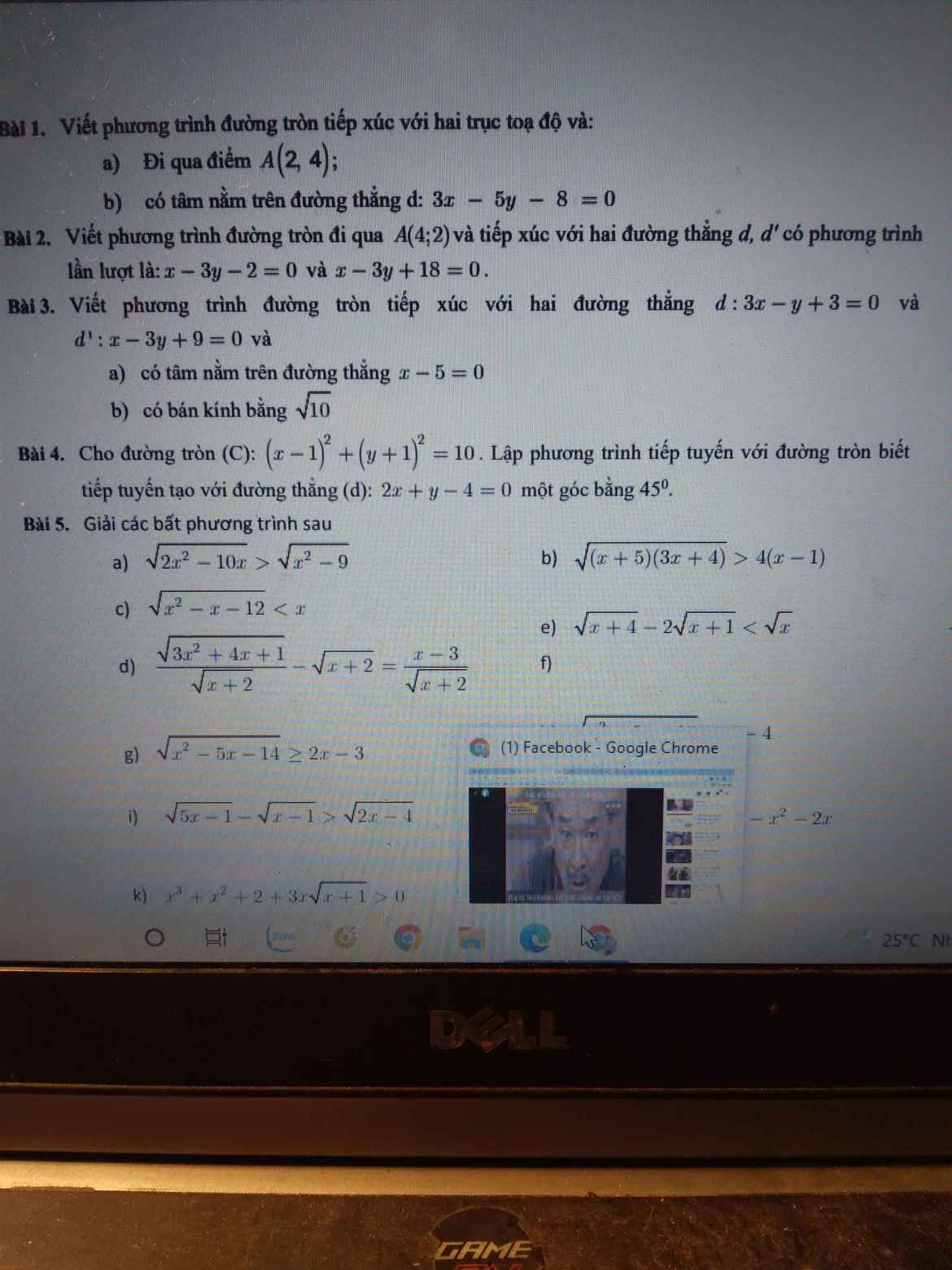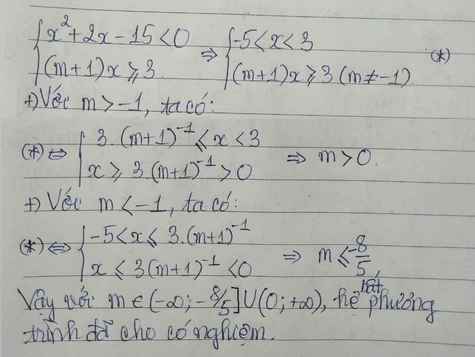
Hãy nhập câu hỏi của bạn vào đây, nếu là tài khoản VIP, bạn sẽ được ưu tiên trả lời.


b: \(sin^2b+cos^2b=1\)
=>\(sin^2b=1-\dfrac{1}{5}=\dfrac{4}{5}\)
=>\(sinb=\dfrac{2}{\sqrt{5}}\) hoặc \(sinb=-\dfrac{2}{\sqrt{5}}\)
TH1: \(sinb=\dfrac{2}{\sqrt{5}}\)
\(tanb=\dfrac{2}{\sqrt{5}}:\dfrac{1}{\sqrt{5}}=2\)
cot b=1/tanb=1/2
TH2: \(sinb=-\dfrac{2}{\sqrt{5}}\)
\(tanb=\dfrac{-2}{\sqrt{5}}:\dfrac{1}{\sqrt{5}}=-2\)
cot b=1/tan b=-1/2
c: \(1+cot^2y=\dfrac{1}{sin^2y}\)
=>\(\dfrac{1}{sin^2y}=1+2=3\)
=>\(sin^2y=\dfrac{1}{3}\)
=>\(siny=\dfrac{1}{\sqrt{3}}\) hoặc \(siny=-\dfrac{1}{\sqrt{3}}\)
TH1: \(siny=\dfrac{1}{\sqrt{3}}\)
\(coty=\dfrac{cosy}{siny}\)
=>\(cosy=\dfrac{1}{\sqrt{3}}\cdot\left(-\sqrt{2}\right)=\dfrac{-\sqrt{2}}{\sqrt{3}}\)
\(tany=\dfrac{1}{coty}=\dfrac{-1}{\sqrt{2}}\)
TH2: \(siny=-\dfrac{1}{\sqrt{3}}\)
\(cosy=coty\cdot siny=\left(-\sqrt{2}\right)\cdot\dfrac{-1}{\sqrt{3}}=\dfrac{\sqrt{2}}{\sqrt{3}}=\dfrac{\sqrt{6}}{3}\)
$tany=\frac{1}{coty}=\frac{-1}{\sqrt{2}}$




a) \(d\left(A;\Delta\right)=\dfrac{\left|4.1-3.3+2\right|}{\sqrt{4^2+\left(-3\right)^2}}=\dfrac{3}{5}\)
b) \(\overrightarrow{AB}=\left(-3;-2\right)\) là VTCP của đường thẳng d
PT tham số của d: \(\left\{{}\begin{matrix}x=1-3t\\y=3-2t\end{matrix}\right.\left(t\in R\right)\)
c) Đường tròn (C) có bán kính \(R=AB=\sqrt{\left(1+2\right)^2+\left(3-1\right)^2}=\sqrt{13}\)
PT đường tròn (C): \(\left(x-1\right)^2+\left(y-3\right)^2=13\)

1b)
Song song => (d): x-y +a =0
Vì d đi qua C(2;-2) => 2- (-2)+a=0
<=>a=4
=> d: x-y+4=0

 giúp mình câu b) c) với ạ
giúp mình câu b) c) với ạ







a: Gọi (d1): ax+by+c=0 là phương trình đường thẳng cần tìm
(d1) vuông góc (d)
=>(d1): 10x+4y+c=0
Thay x=2 và y=3 vào (d1), ta được:
c+20+12=0
=>c=-32
=>10x+4y-32=0
c: (d): x=1-2t và y=3+4t
=>VTCP là (-2;4)=(-1;2)
=>(d1) có VTPT (-1;2)
mà (d1) đi qua M(2;-3)
nên (d1): -1(x-2)+2(y+3)=0
=>-x+2+2y+6=0
=>-x+2y+8=0
b: (d1) vuông góc (d)
=>(d1): y=0x+b
Thay x=-1 và y=2 vào (d1), ta được:
0*(-1)+b=2
=>b=2
=>(d1): y=2